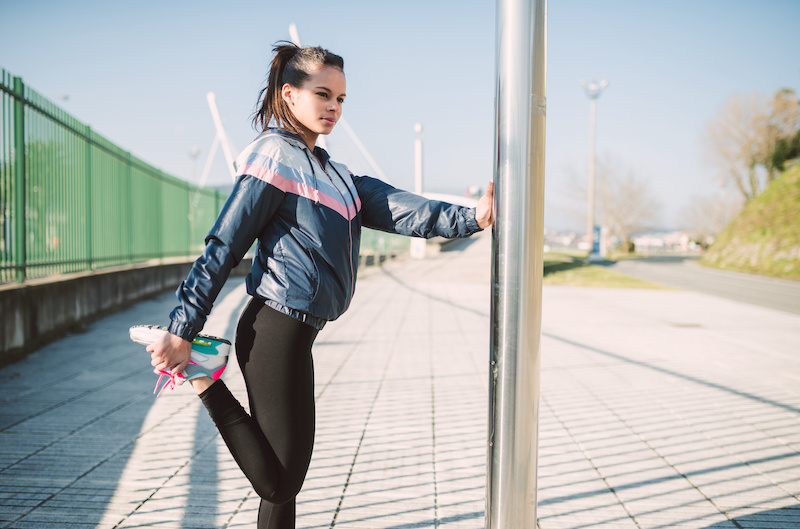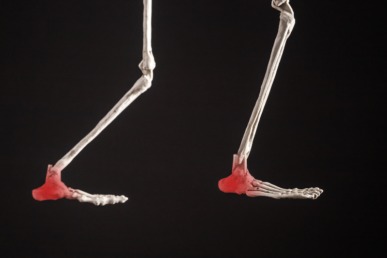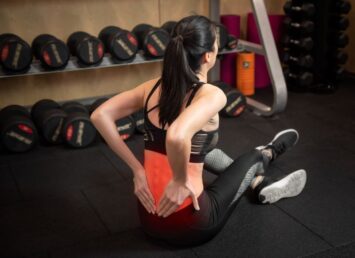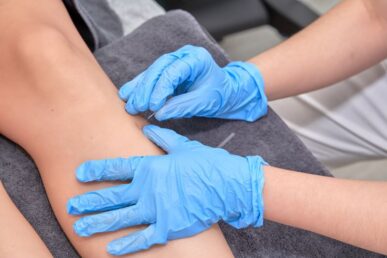Shin splint pain occurs when the muscles, tendons, and fascia covering the shin bone (tibia) become inflamed. This frequently happens when first starting a running program, but is also common among seasoned athletes who run long distances or participate in sports like basketball or soccer that require sudden stops and starts.
Failing to warm up before exercise, wearing poor-fitting shoes, or over-fatiguing/stressing the calf muscles (or having extremely tight calf muscles) can all be causes.
Just like with other painful conditions that interfere with athletic training, sports chiropractic care can provide safe, effective options for preventing and treating shin splints.
Sports massage, soft tissue manipulation, and dry needling can all loosen tight muscles and make them more pliable. It can also reduce scar tissue and improve blood circulation to the area.
Strategically applied sports tape and, when necessary, orthotic shoe inserts that address pronation issues or arch support can reduce stress on the shin during activity.
Stretching and strengthening exercises add balance to lower leg structures so that they work together instead of in opposition to each other. Here are a few to try at home:
If You Already have Shin Splint Pain:
Flex/Point
Sit on a chair, bench, or another stable surface with one foot firmly planted on the ground. Bend the other leg up to hug your tibia (shin bone) against your abdomen. Slowly point the toes toward the floor and hold the position. The goal is to both stretch the muscle over the shin bone and constrict (tighten) the calf muscle. After about 20-30 seconds, flex the toes back up toward your face and hold. This position may be more uncomfortable if you already have pain but stretch through the best you can. Repeat several times and then switch to the other leg.
Toe Drag
From that same sitting position, reach one foot behind you underneath the chair or bench with your toes facing the floor. Press the top of the foot into the ground and, with resistance, drag the toe toward you until you feel the stretch in your shin. You may have to slightly rotate the foot internally or externally just a bit to feel the stretch in the right place, but you’ll know when you get there! Hold for up to a minute and then repeat on the other side.
To Prevent Shin Splints:
Diagonal Wall Stretch
Stand with your palms on a wall or railing and step back with both feet to a slight diagonal plank position. Place one foot slightly in front of the other with the knee slightly bent, and press into the back, straight leg with intention, pushing your heel as close to the floor as possible. Repeat up to ten times and then stretch the other leg.
Diagonal Heel Raises
Starting in the same diagonal wall plank position, keep both feet back and both legs straight. Slowly raise as high onto the balls of your feet as possible and hold that position before slowly pressing your heels back down against the floor. You should feel a stretch in each direction. If you want a deeper stretch, slightly bend the elbows so the torso is closer to the wall, or step the feet further back away from the wall.
Toe and Heel Walks
Prior to physical activity, take a few minutes to walk only on the heels of the foot with toes pointed toward the sky. Then work the opposing muscles by walking only on the tip toes for the same amount of time. This stretches out and warms the lower leg muscles to prepare them for activity.
Your team at Dynamic Sports Medicine can instruct you on proper technique in a variety of injury-preventing and rehabbing stretching exercises. We can also evaluate your gait, show you how to apply sports tape, and discuss the merits of sports massage to keep you free from shin splints during training.
Contact us today.





